I’m going to generalize here based on 35 years of working with people drawing from observation—-people suck at drawing angles. Figuring out the slope of a back or the turn of a leg is really difficult to see because it needs context. But context needs to be something you are aware you need. The drawing studio is a Petri dish for a lot of actions that I see in the world. How we look and don’t see, generalizing complexity or obliterating it into zero sum, black and white certainty.
Thinking about how you do something is critical to the result of the action, how we get there is not just a means to an end. Neglecting the path to an answer is the switch mentality that powers A.I. and what passes for decision making when choices are made binary. My students were locked in an epic battle this week. They had created a 3D environment in the lab and then had to apply the construct in the studio with a life model setup. I added dramatic lighting and a skeleton to the upper storey of the model stand, to give the studio a fighting chance against their 3D environments. They had 2 worlds that they had to adapt to make one coherent expression—it was incredibly difficult.
It was difficult because both inputs, the 3D space and the physical setup, have completely unique levels of information and different ways that the student engages with the content. There’s much more to all of this, but this exercise got me thinking about the issues with using A.I. for inspiration. One of the concerns I had for my students in this exercise, is their ‘locking in’ of reference. This is something I experience when I’m researching and I find a great photo—-it burns in and is hard to unsee—which can be a problem when I’m trying to situate my ideas rather than sourcing images as my idea coalesces.
A.I. imagery is all about a locked in vividness— a visual solution, specific lighting, viewpoint, colour, character —-this is not inspiration, this is shutting down choices, no matter what, you can’t unsee this. I don’t understand why we would want to take the joy out of making and seeing. During gesture drawing—the quick stuff— the point is to be training the eye to see what matters. Seeing the essential and the necessary rather than a tattoo or hair or any other distracting bits. This is one of the key reasons to work with life models—-there is so much humanness standing between you and the paper. How attention and seeing is directed to express content—-to see inside the merely visual. Drawing is a profound act of living.
In complete defiance of generative A.I. images I bring you Euan Uglow. A British painter and educator, Uglow’s work is unsparingly focused on his own sighting of form, space, and colour. I mentioned him to my model this week, and he said, “ Oh yes, the model killer.” No, Uglow didn’t murder his models but he had more than a few that quit and with poses measured in years rather than minutes, it’s understandable.
A student of William Coldstream at Camberwell in the UK, and then following Coldstream when he returned to lead the Slade School as Principal, and Professor of Fine Art. The Coldstream method of using marks and cardinal ticks to measure form through the use of the brush as a measure instead of perspective, was adapted and innovated by Uglow into an arduous process in a studio space that looked like a serial killer’s lair in a police documentary —complete with chalk outlines of prone bodies.
Beyond the novelty of the years it took him to paint an image, there is the actual art, which I find incredibly interesting, because of what he doesn’t do in the work.
Uglow’s painstaking process does not offer us photo realism and an over shined apple surface. In the image above I have superimposed a line drawing of the photograph of the skull reference used in his painting. There is a built in distortion in the photographic lens and distortion in observational drawing. The photographs of Uglow’s studio and stilllifes always seem tawdry and mean spirited. There is more than meets the eye in his work and the colour, oh, the glorious colour.

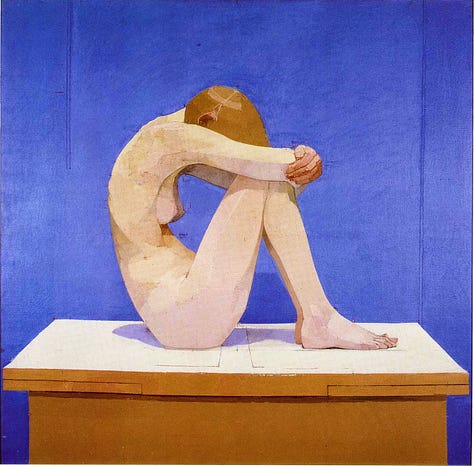
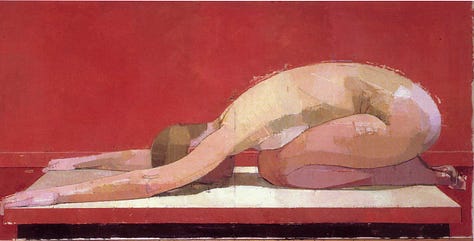

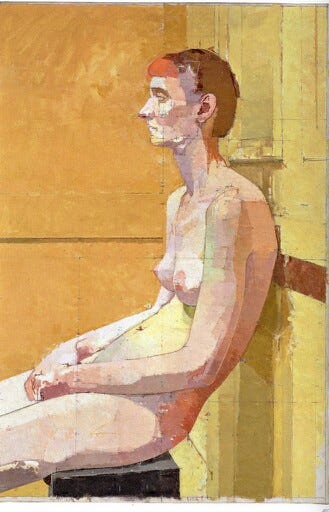

Euan Uglow described his work as —painting an idea not an ideal. These paintings are based on how his eye perceives form, space, and colour as it extends across his vision and measured by his system of seeing. Extracting an elemental physical language from such an idiosyncratic approach is why I have faith in human made art. We need questions, we need to see slopes and climb them, and most importantly we still need to wrap our hands and our heads around the form and beauty of the world we live and breath in.




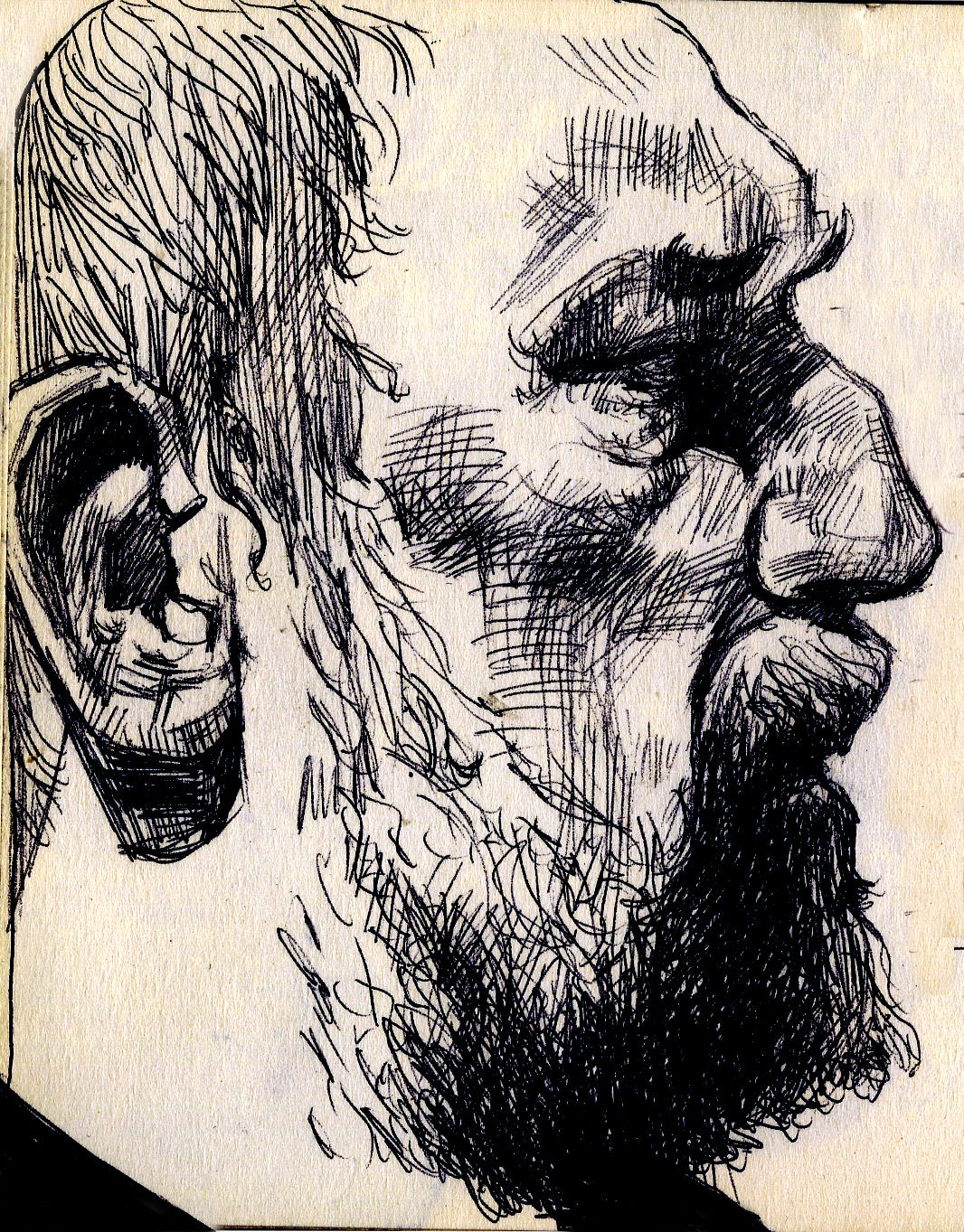
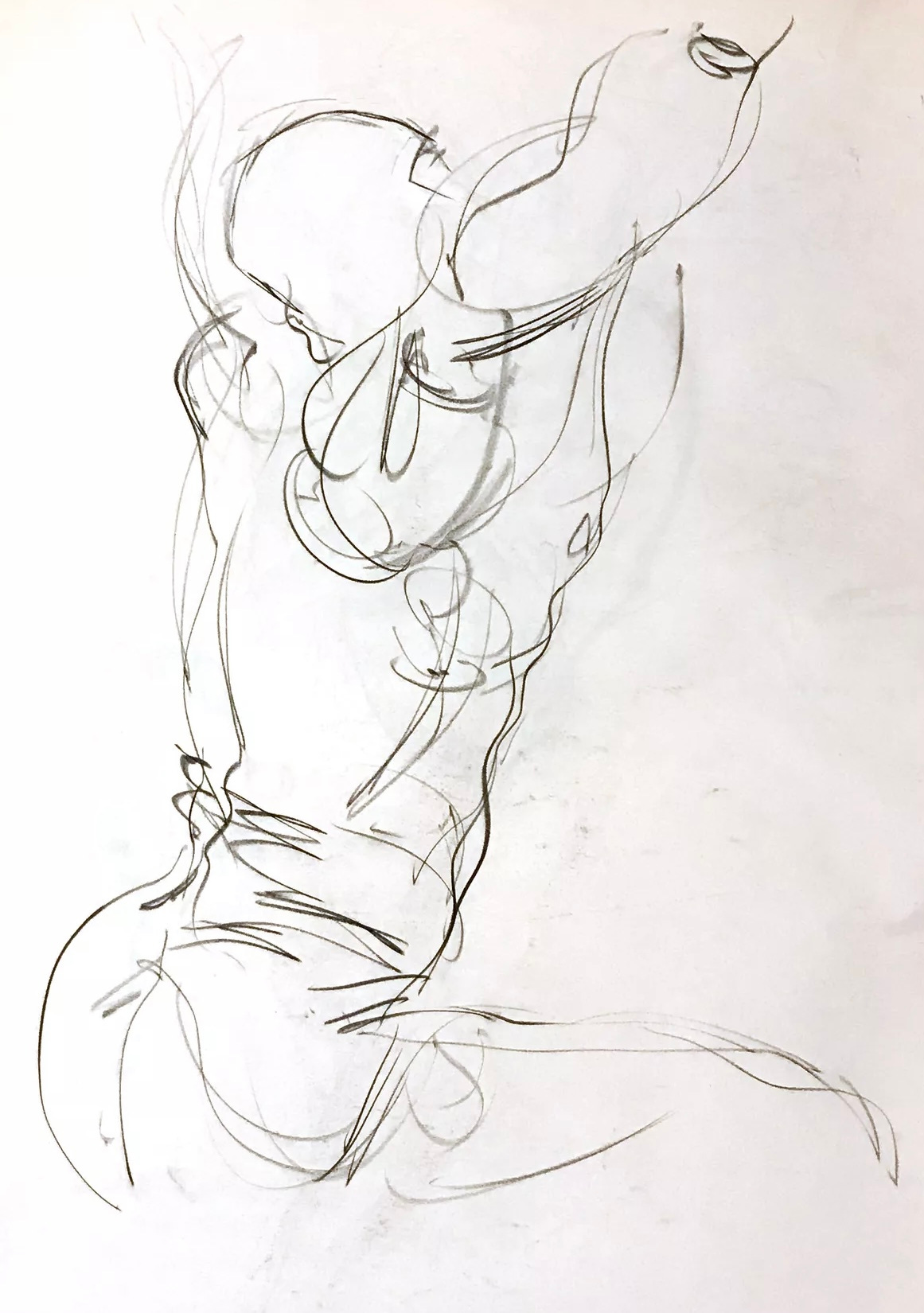


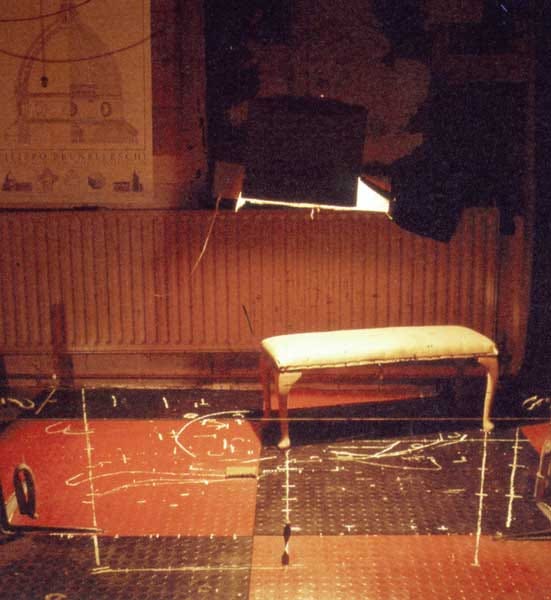

Uglow fan here.
Excellent writing, as always. Thanks, Joe.